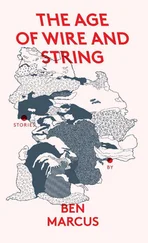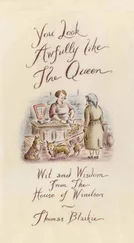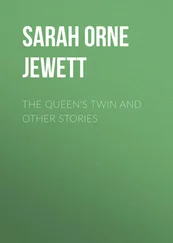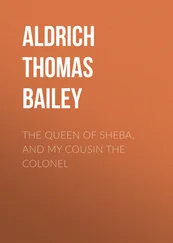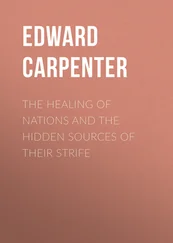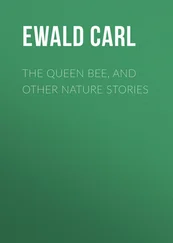Sleep was at a premium, snatched between night-time Downing Street parleys and daytime consultations with officials. A call in the early hours of 21 April to attend a royal birth, shortly before one of the most critical meetings in the entire dispute between the Prime Minister and the coal owners, was therefore not entirely a cause for celebration. But it was a duty not to be shirked, and Joynson-Hicks was equal to it. He hurried to the bedside of the twenty-five-year-old Duchess of York, wife of the King’s second son, at 17 Bruton Street – the London home of the Duchess’s parents, the Earl and Countess of Strathmore, who happened to be among the most prominent coal owners in the United Kingdom. The child was born at 2.40 a.m., and named Elizabeth Alexandra Mary, after the Duchess and two Queens.
Why the Home Secretary needed to attend the birth of the child of a minor member of the Royal Family was one of the mysteries of the British Monarchy. Later, when Princess Elizabeth herself became pregnant, an inquiry was launched at the instigation of the then Labour Home Secretary, Chuter Ede. Inspecting the archives, Home Office researchers rejected as myth a quaint belief, fondly held by the Royal Household and the public alike, that it had something to do with verification, James II and warming pans. After taking expert advice, Ede informed Sir Alan Lascelles, Private Secretary to George VI, that it was no more than ‘the custom of past ages by which ministers thronged the private apartments of royalty daily, and particularly at moments of special significance such as births, marriages and deaths’. 1In 1926, however, it was enough that it was customary – Jix was not the kind of man to question it. According to The Times the next day, Sir William ‘was present in the house at the time of the birth’ and conveyed the news by special messenger to the Lord Mayor.
It was a difficult delivery, despite the best attention. Not until 10 a.m. did the Duchess’s doctors issue a guarded statement which revealed what had happened. ‘Previous to the confinement a consultation took place,’ it declared, ‘. . . and a certain line of treatment’ – decorous code for a Caesarean section – ‘was successfully adopted’. 2The announcement had more than a purely medical significance. The risks such an operation then entailed, and would again entail in the event of subsequent pregnancies, made it unlikely that the Duchess would have a large family, and hence reduced the chances of a future male heir.
At the time, however, few regarded the Princess’s proximity to the throne as important. Some later writers, looking back, argued that her succession was always likely. 3But this was post hoc : in 1926 the Duke of York’s elder brother was young and healthy, and was expected to marry and have issue. When Princess Elizabeth was born she was third in line for the throne after her uncle, the Prince of Wales, and her father, and under the 1701 Act of Settlement she took precedence over her father’s young brothers – just as Queen Victoria had taken precedence over the Duke of Cumberland, younger brother of William IV, in 1837, even though her own father, the Duke of Kent, had predeceased him. Therefore, until either her uncle had a legitimate heir, or her father had a son, Elizabeth’s eventual succession was possible, and she had a special standing as a result. But this chance initially seemed remote, and the Princess was much less afflicted during her earliest years by the isolating sense of an inescapable destiny than either her eldest uncle, or her own eldest son.
Despite the distance of the child from the throne, the newspapers took a keen interest in the birth. Perhaps they were responding to the deepening crisis with a bromide, or perhaps it was part of a patriotic reaction. Whatever the cause, far more attention was paid to Princess Elizabeth in 1926 than to George V’s first two grandsons, George and Gerald Lascelles, sons of the Princess Royal, in 1923 and 1924, even though at the time of their births they had been similarly placed in the line of succession. Such, indeed, was the excitement that a crowd swiftly gathered in Bruton Street in the hope of seeing the Princess, to greet the messenger boys who arrived with telegrams and presents, and to cheer the Duchess’s royal callers.
Among the first to arrive were the King and Queen. ‘Such a relief and joy,’ wrote Queen Mary in her diary, noting that the baby was ‘a little darling with lovely complexion & pretty fair hair’. The Duke of York was beside himself. ‘We always wanted a child to make our happiness complete,’ he wrote to his mother. Kings, however, prefer male descendants. The Duke therefore added a little anxiously, ‘I do hope that you & Papa are as delighted as we are, to have a granddaughter, or would you sooner have another grandson. I know Elizabeth wanted a daughter.’ 4
Then the nation was plunged into turmoil and uncertainty as, for six bewildering days, industries and services were halted, and workers took to the streets. The Duke of York attended debates daily at the House of Commons; at Buckingham Palace, sentries exchanged their red coats for khaki; and the royal entourage was cut to a minimum as an emergency measure, to allow the lords-in-waiting and most of the equerries to take up duties in Jix’s army of special constables. Yet public interest in the royal baby was unabated. On 14 May, just after the ending of the Strike, Queen Mary’s lady-in-waiting and friend, the Countess of Airlie, visited 17 Bruton Street to deliver the gift of a bottle of ‘Jordan water’ from the Holy Land, for use at the christening. She found such a throng in the street that the infant had to be taken out for her morning airing by a back entrance.
The christening took place at Buckingham Palace at the end of May, attended by ten ‘children of the Chapel Royal’ – small boys clad in crimson and gold, with neck jabots of old lace. The Princess wore a skirt several feet in length. She cried so much during the service that immediately after it her old-fashioned nurse surprised ‘the modern young mothers present’ (as Lady Airlie described some of the Duchess’s friends), and much amused the Prince of Wales, by dosing her heavily from a bottle of dill water. 5In spite of the puckering of the royal features, great interest was shown in the infant’s physical appearance. One resourceful sketch-writer wrote of the Princess’s ‘pure cream complexion and blue eyes fringed with long, dark lashes’. 6
The baby was no sooner baptized than an active debate began in the press about how she should, and would, be brought up. The issue of modernity versus tradition became a matter of particular concern, especially to women writers in the popular magazines, where prejudice and preference tended to merge with the little evidence that was available about what actually went on. There was also the question of whether royal child-rearing should be special – given the future responsibilities of a member of the Royal Family – or follow a pattern which any mother should treat as the ideal. Most commentators opted for the latter. ‘Sensible’ was a much favoured word: a sensible nursery regime involved strict, no-nonsense orderliness, with an emphasis on routine, and the avoidance of fads.
Above all – a point on which all agreed – there must be no excessive luxury. A distinction was made between the opulent symbols of royal status, which were considered both acceptable and desirable; and any kind of physical or especially dietary indulgence. Thus, the National Jewellers’ Association was applauded for presenting the Princess with a silver porringer, with ivory handles carved in the form of thistles and a cover surmounted by an ivory and silver coronet. There were no objections when the chairman of the Association, Mr G. L. Joseph, declared after a little ceremony at Bruton Street his hope that the porringer would take its place ‘upon the breakfast table of the first baby in the land, and may even be banged upon the table by her infant hands’. 7It was also felt appropriate that royal baby clothes should be hand-made from the finest materials; and there was wide approval at the news that the Queen of England herself, together with Lady Strathmore and the Duchess of York, had personally stitched the Princess’s layette, assisted by the inmates of charitable institutions where relevant skills were to be found. ‘Many poor gentlewomen,’ it was reported, ‘have profited by the Duchess’s order for fine lawn and muslin frocks, little bonnets and jackets, and all the delightful accessories of baby’s toilet.’ However, it was simultaneously claimed that, as ‘a great believer in modern methods of bringing up infants,’ the Duchess of York rejected the arguments of those who favoured long skirts for ordinary use.
Читать дальше

